Redipuglia is pretty unremarkable Italian town, on the road out from Trieste. We usually pass through it on our way to IKEA. It’s one of those Italian towns where the houses sit alongside the road – it always seems as if everyone lives on the roadside, as detached houses, usually with the shutters closed to keep the heat out in the summer and in, in the winter, string out along the road. Every now and again, there’ll be a bar or a store. But nothing much really to write home about. Until you are just about to leave Redipuglia, and you are greeted with the most astonishing sight. Rising up from the road, a stepped monument, topped with three huge crosses.The Memorial of Redipuglia, Italy’s largest and most majestic memorial dedicated to the soldiers who fell in the Great War. Locally referred to as Sacrario Militare di Redipuglia, is the largest war memorial in Italy and also among the most significant war shrines in the entire world.
Built on the slopes of Mt. Sei Busi and designed by architect Giovanni Greppi and sculptor Giannino Castiglioni, it was opened on 18th September 1938 after ten years of construction. This massive monument, also known as Memorial “of the Hundred Thousands”, accommodates the remains of 100,187 soldiers who fell in battle in the surrounding areas; some of them had been initially buried on Colle Sant’Elia nearby. Strongly advocated by the fascist regime, this monument intended to celebrate the sacrifice of the fallen soldiers. It is structured on three levels, symbolising the army descending from the sky, led by its Commander towards the Path of Heroes. On the top, the three crosses evoke Mt. Golgotha and the crucifixion of Christ.
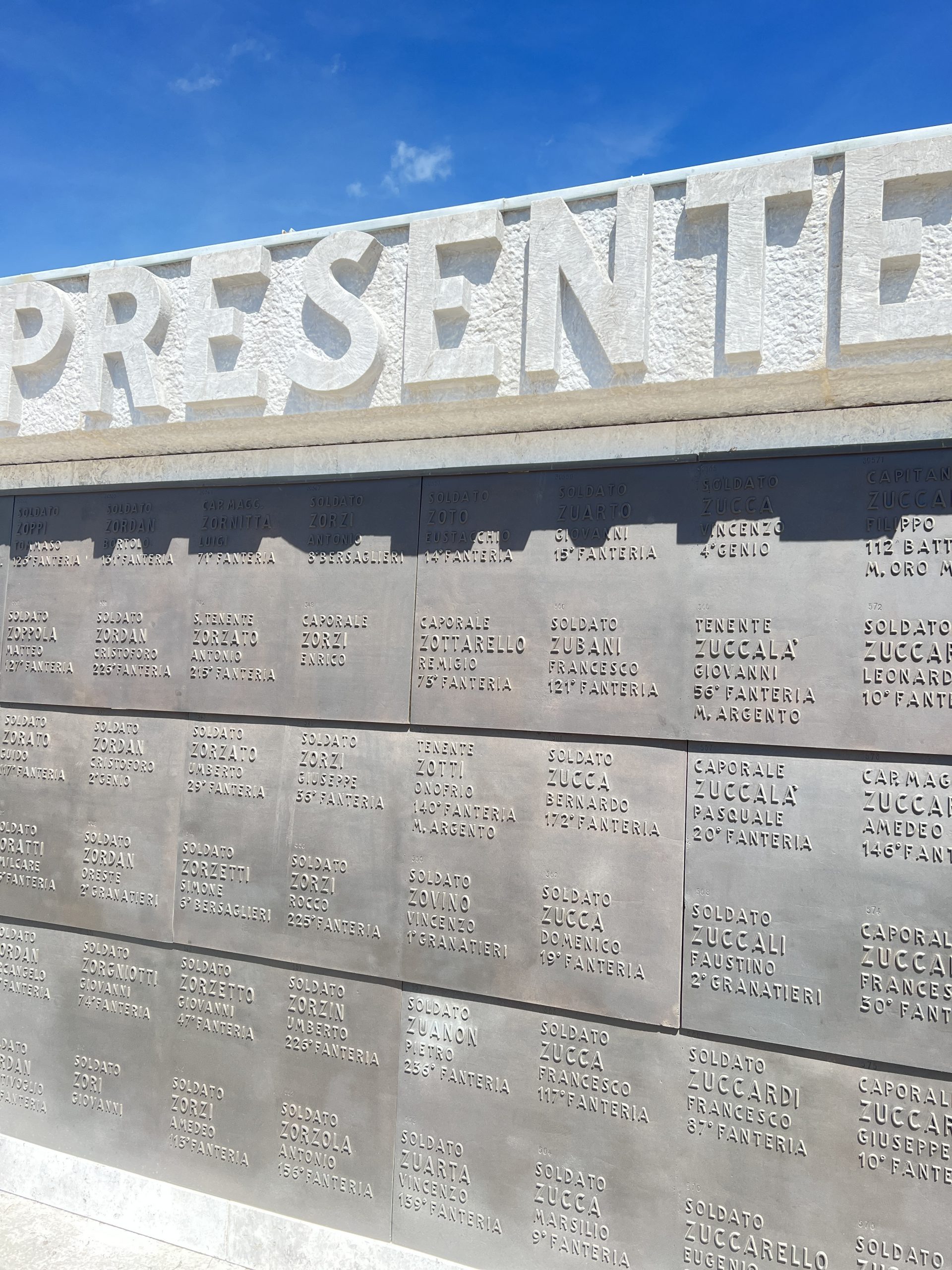
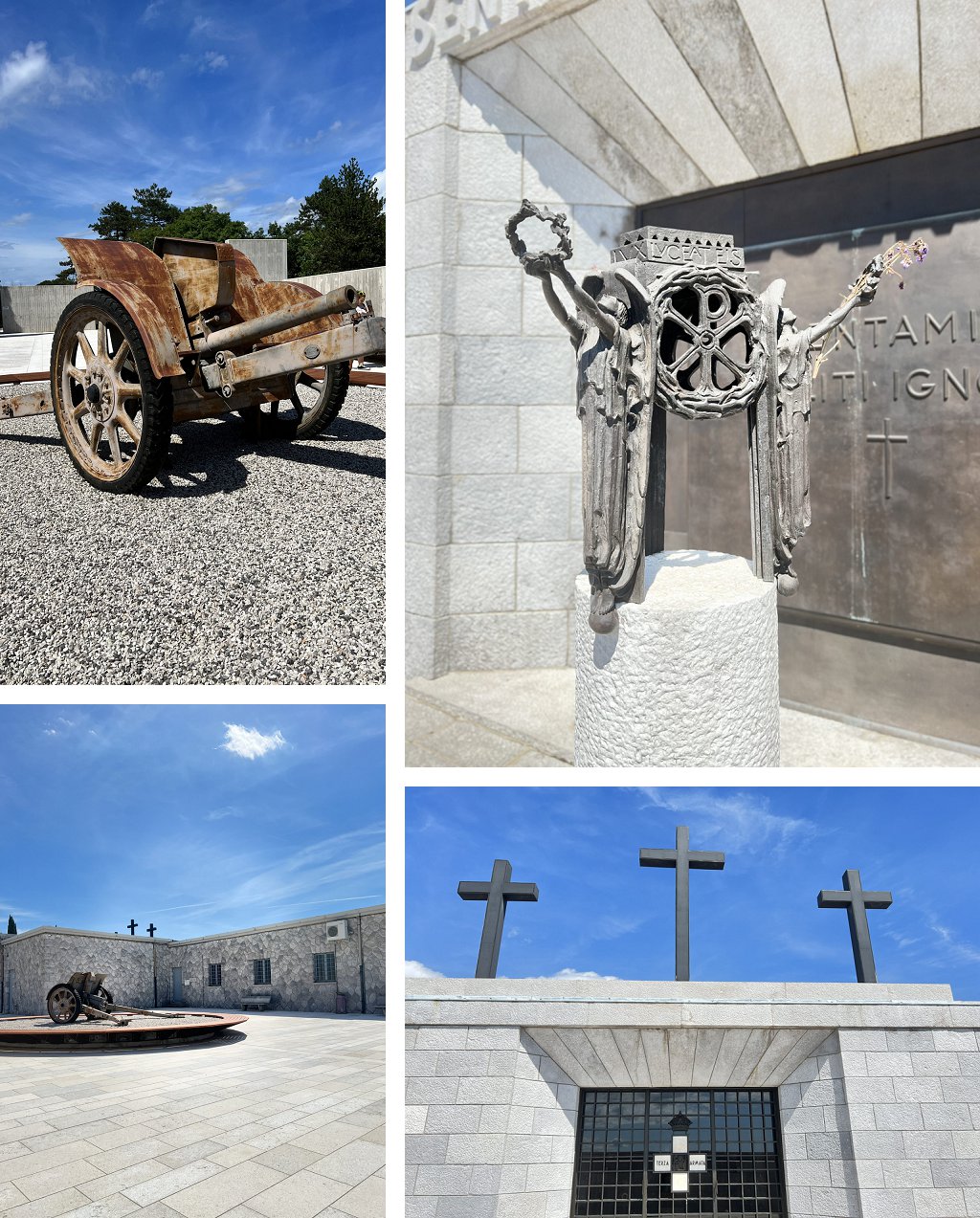
Twenty two large steps (2.5m high,12m wide) rise up from the foot of the memorial, containing the remains of 39,857 identified soldiers in alphabetical order. Each burial niche is surmounted by the wording “Present”. In the centre of the first large step, you can find the niche of the only woman buried here, a nurse named Margherita Kaiser Parodi Orlando. At the end of the lateral stairs and the large steps, two large tombs covered with bronze plates contain the remains of over 60 thousand unknown soldiers. Past them, you can reach the top of the memorial and visit a small chapel which houses a “Deposition” and the panels of the Stations of the Cross by sculptor Castiglioni. Three bronze crosses stand above the chapel.
In the rear of the last large step there are two museum rooms, with pictures of the first Memorial of Redipuglia, documents, war relics and paintings by Ciotti that used to decorate the tomb of the Duke of Aosta, originally located in the chapel on the top of St. Elias Hill. There are many personal artefacts, housed in glass cabinets, which really convey the sense of horror of the losses. Pocket watches, rings, spectacles, medals, shoes, photographs, hand written notes. All belonging to someone, now long buried.
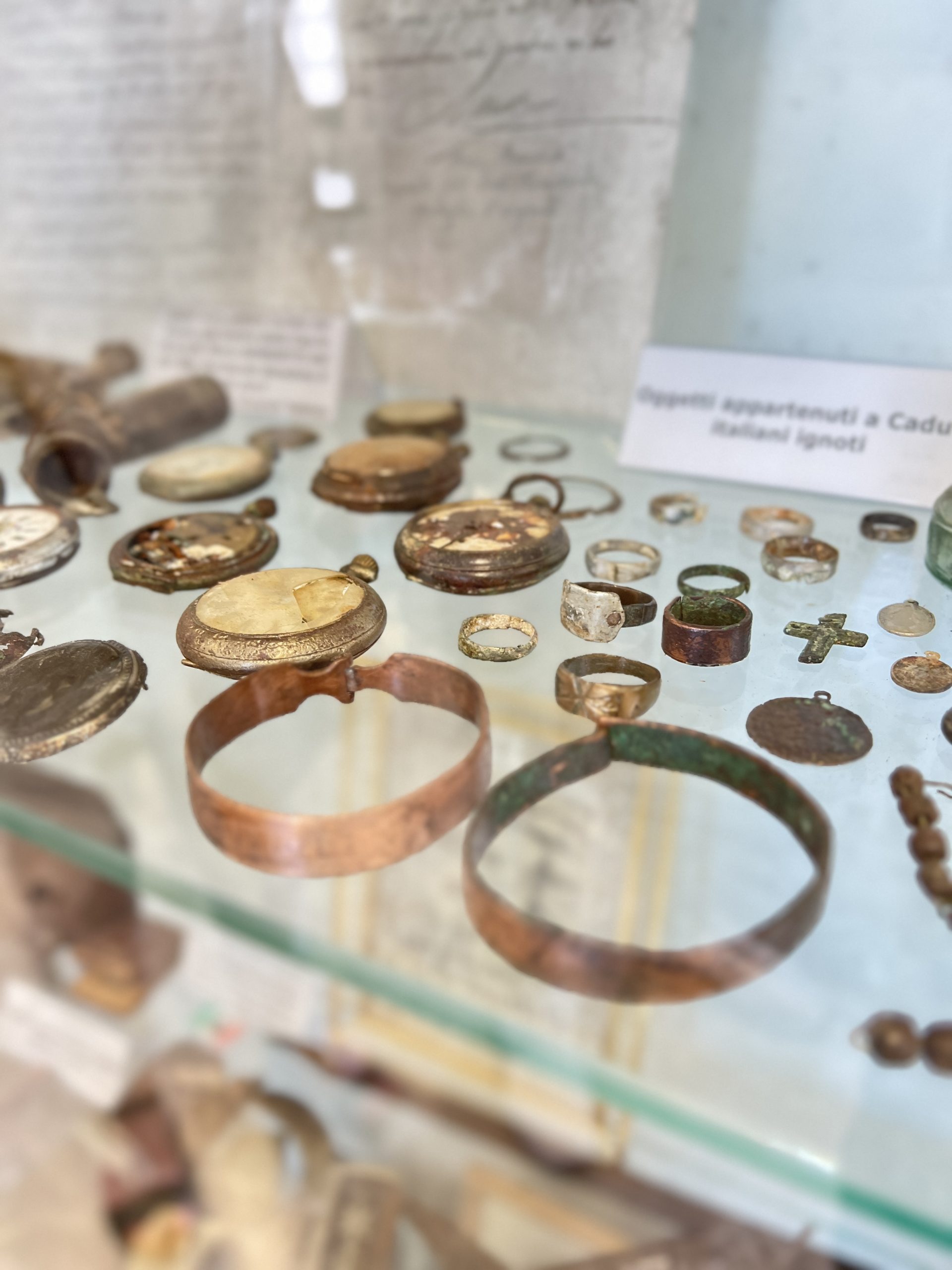
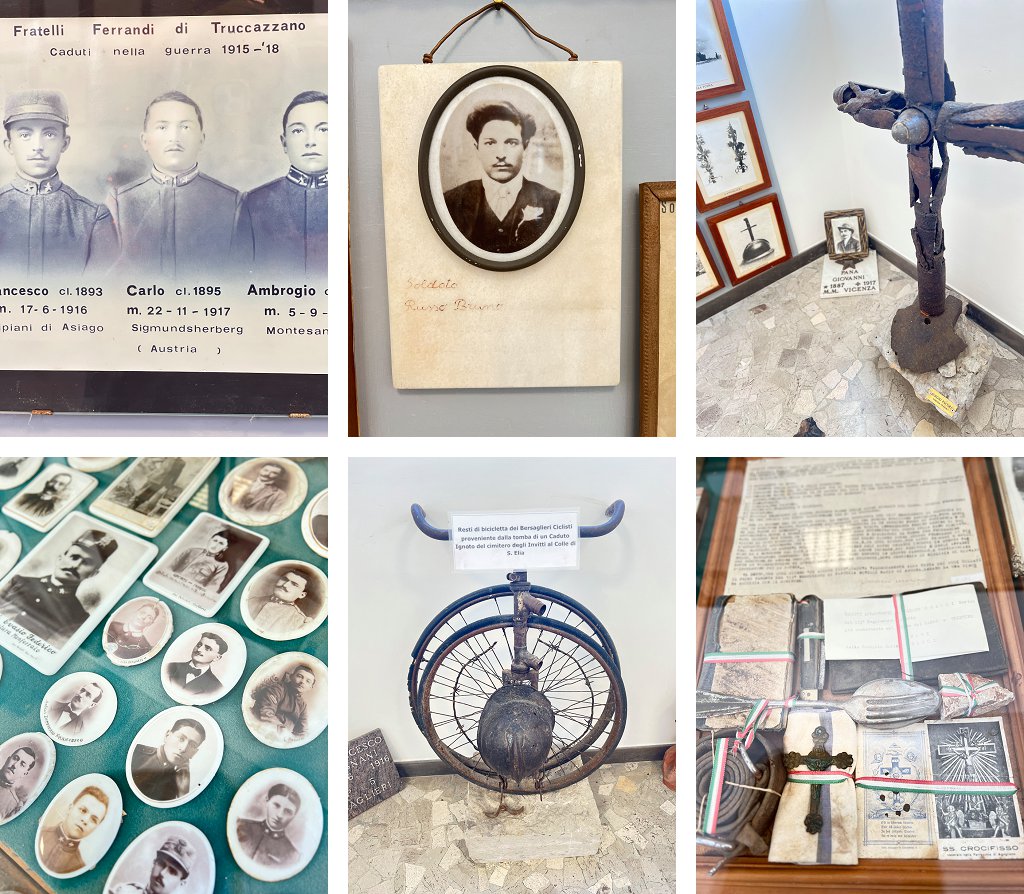
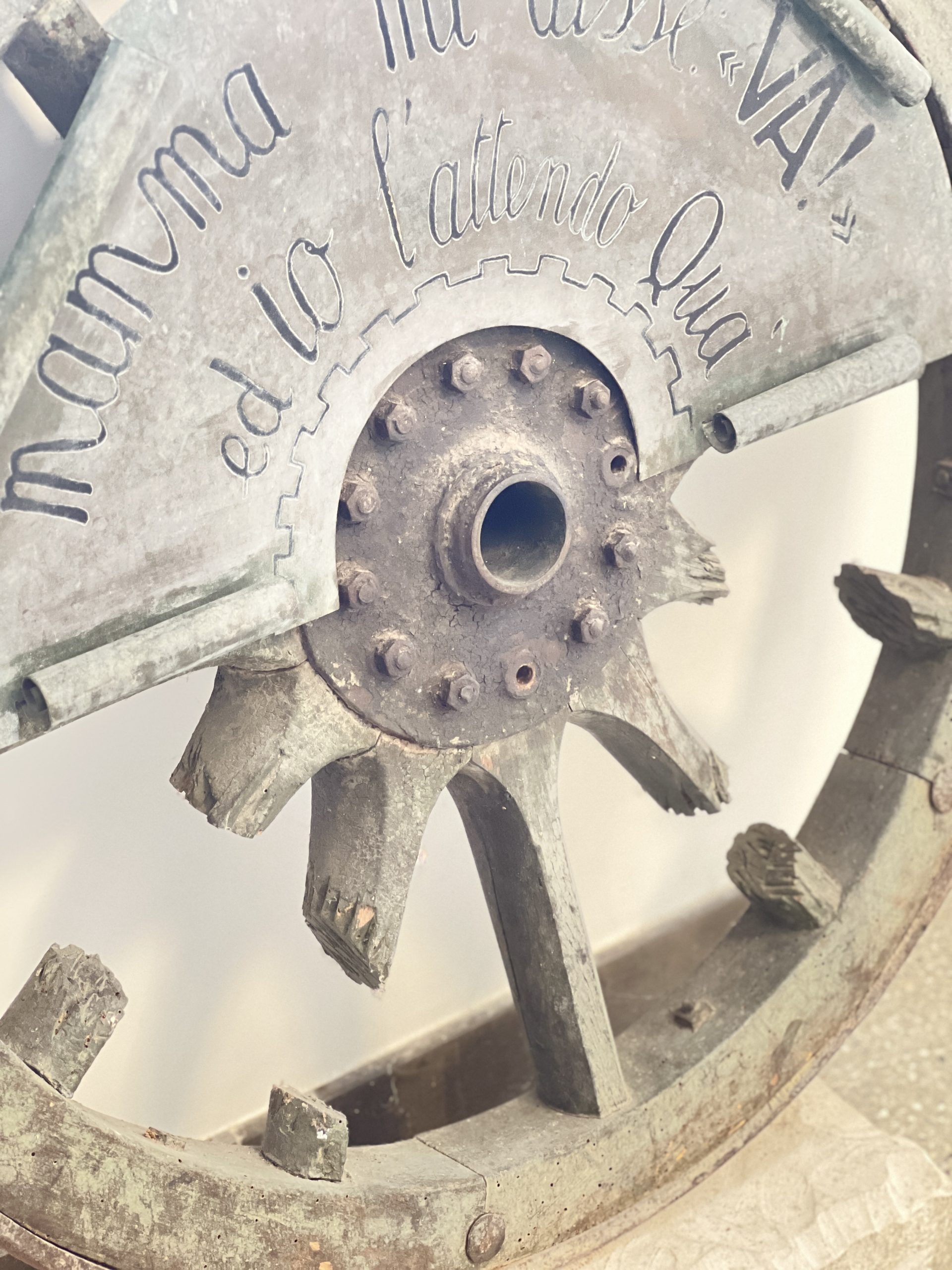
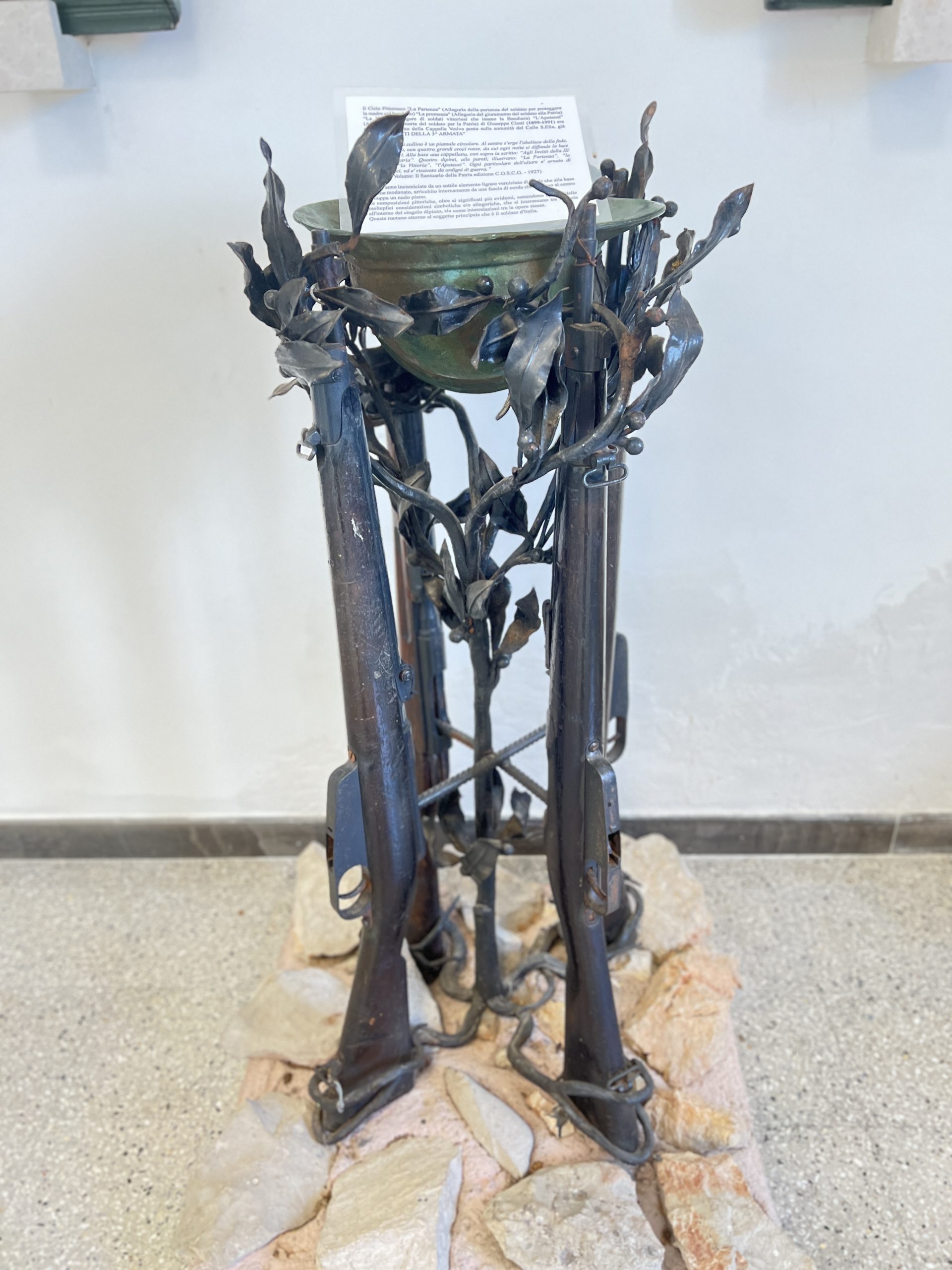
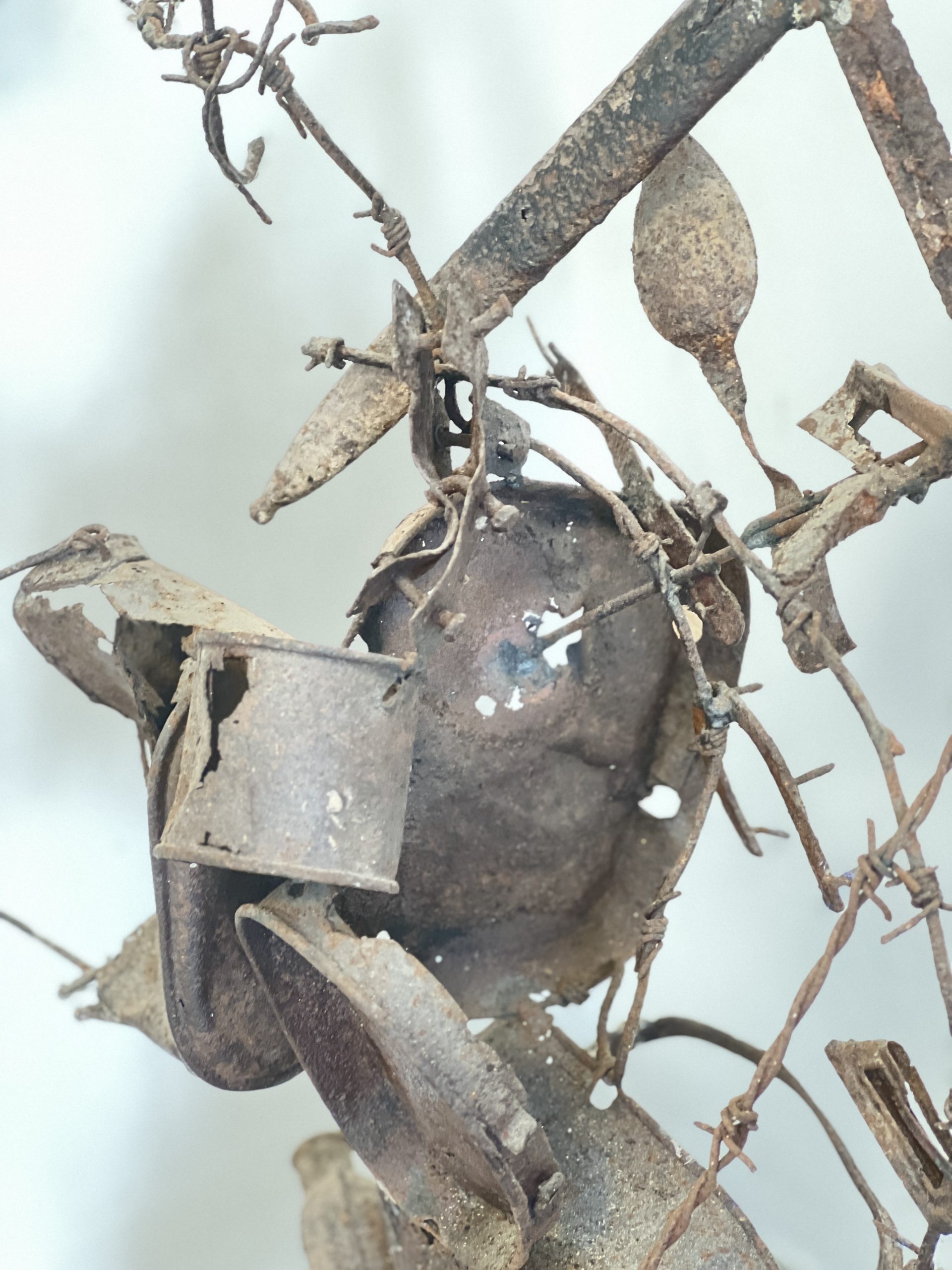
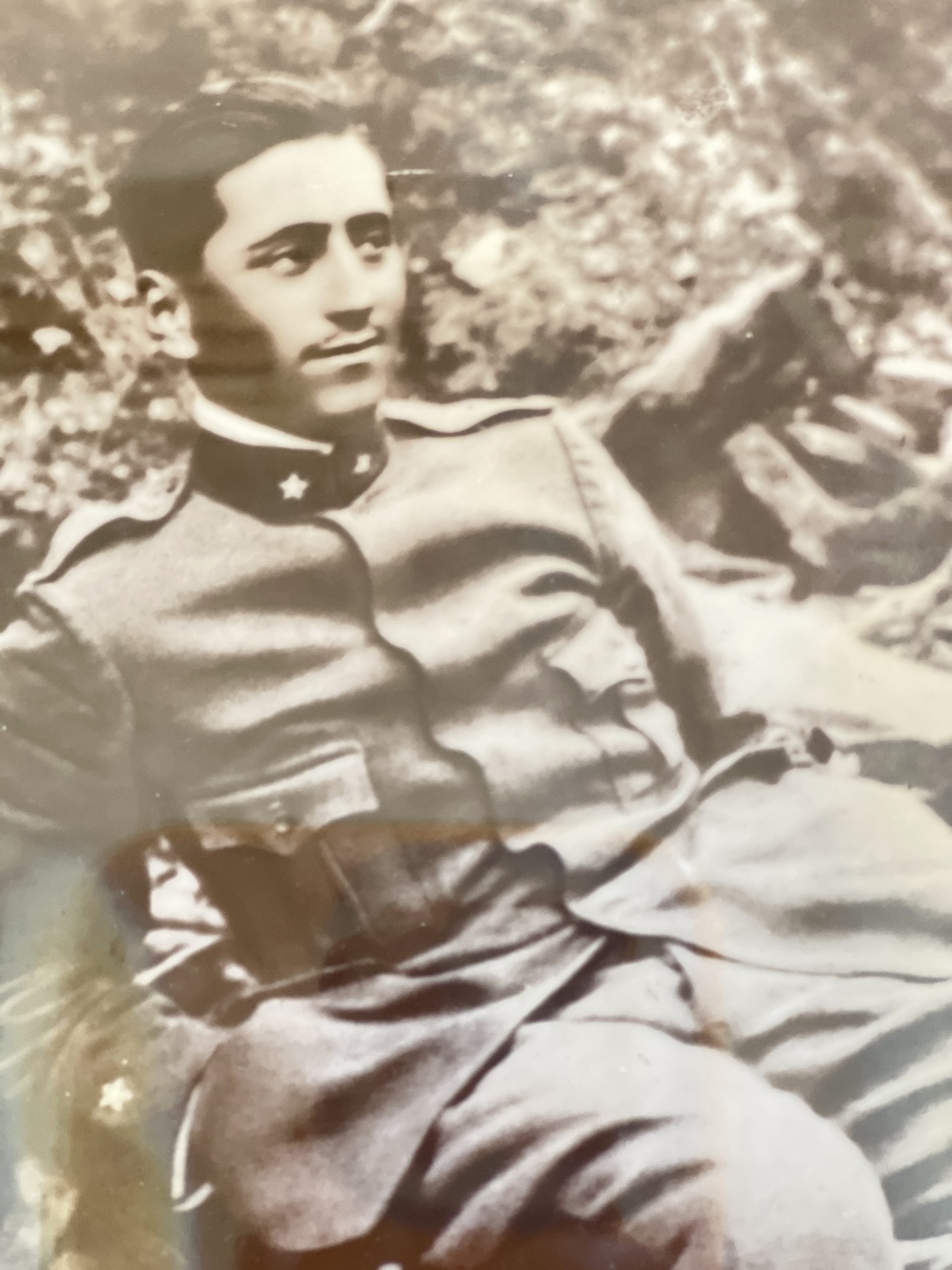
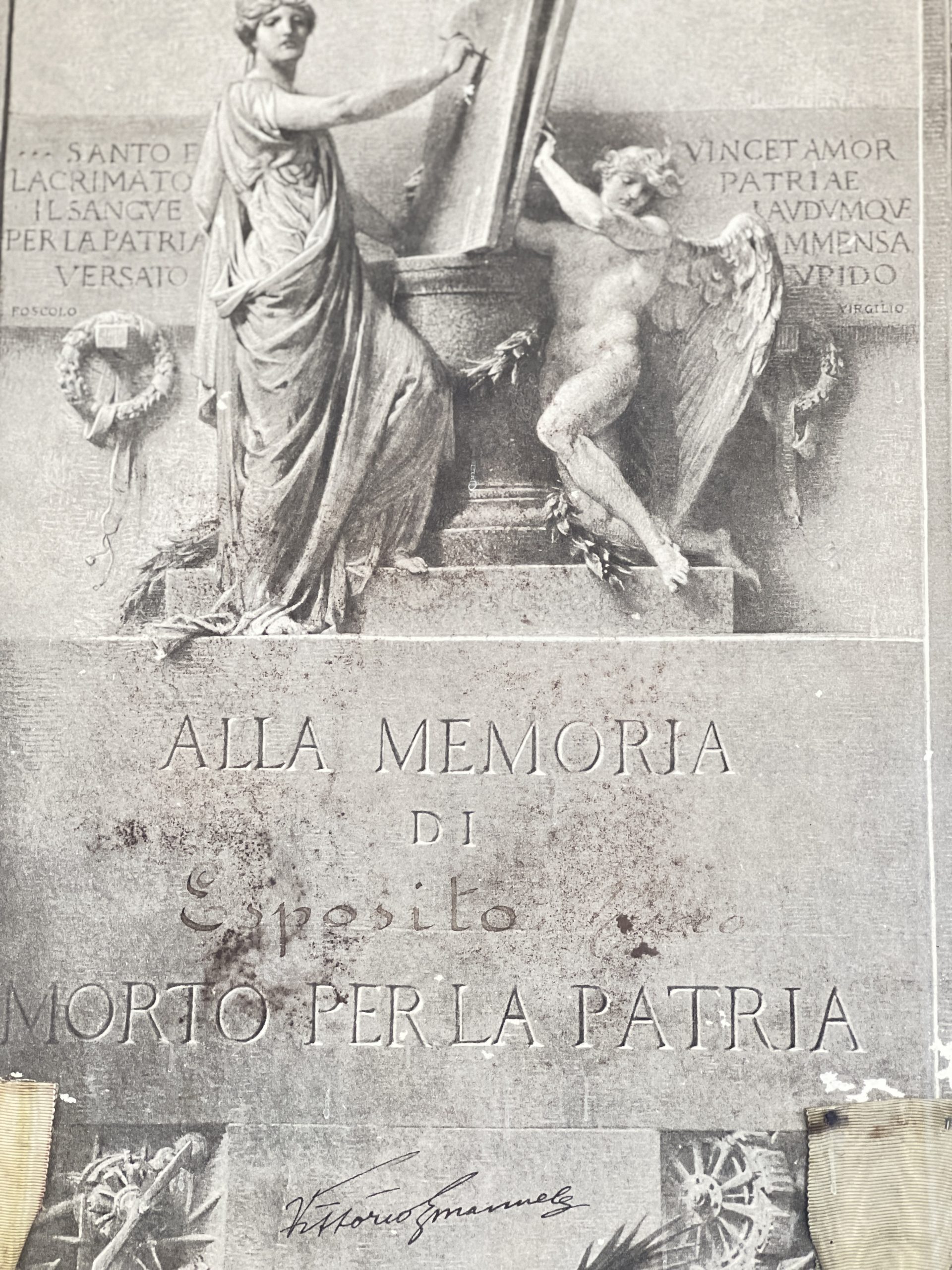
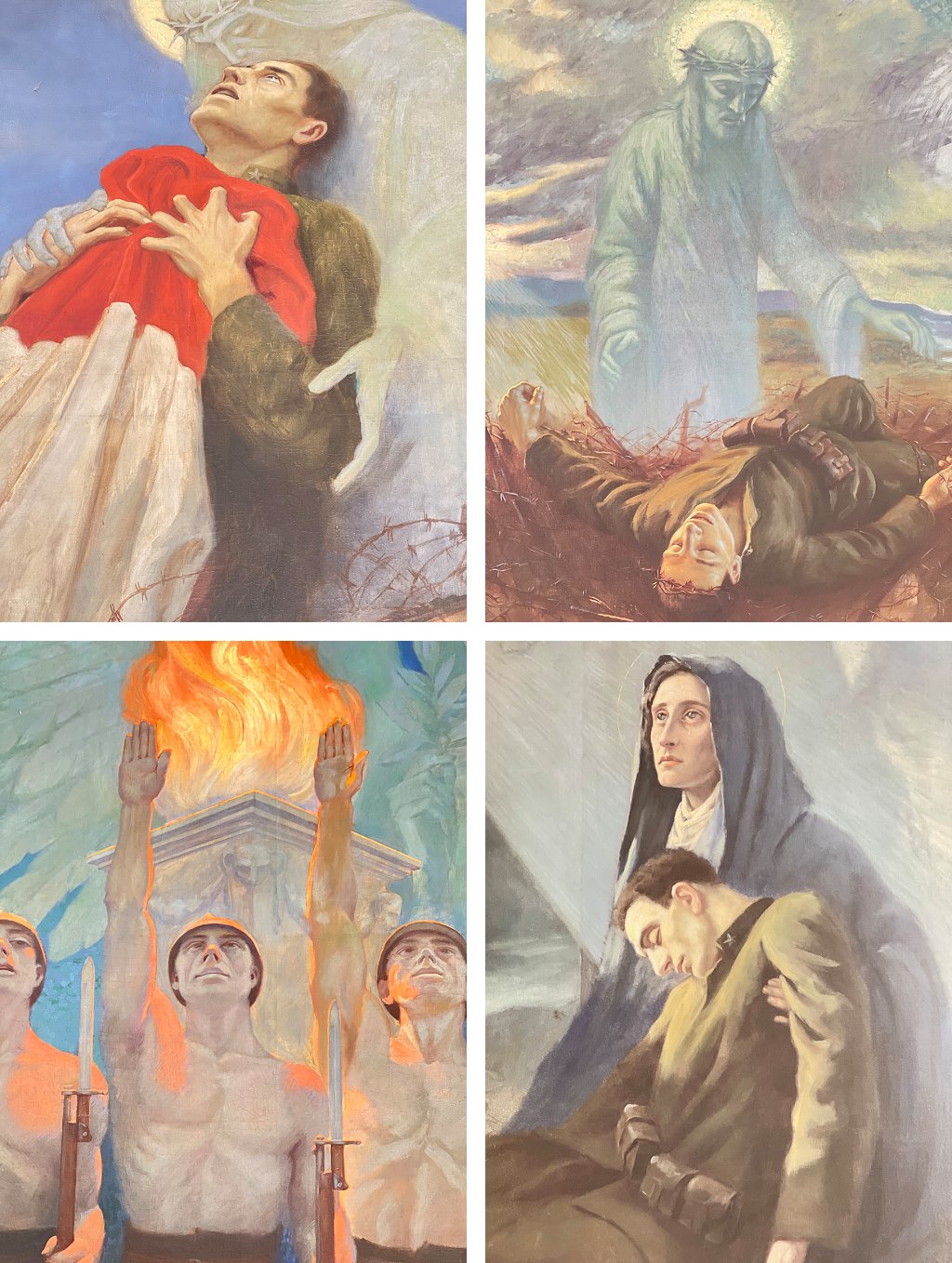
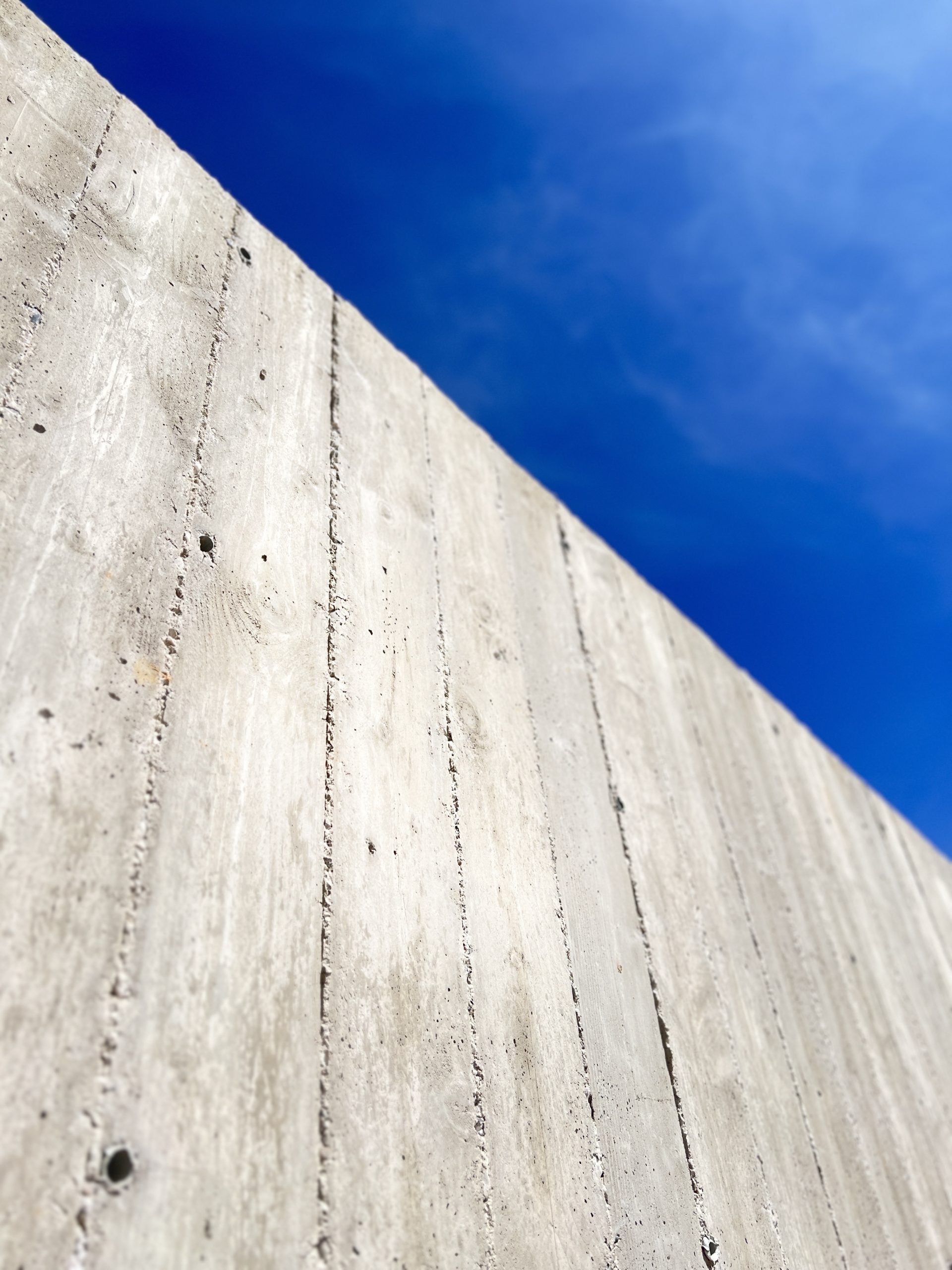
The memorial and museum rooms are free to visit and is open to the public 24 hours a day. If you don’t fancy the climb from the bottom – and it’s not overly arduous, I promise you – there is a car park at the top of the site. It’s not very clearly marked and you do need to cross the train track, but it does cut out a lot of walking if your main aim is to get to the top quickly. I’m really pleased that we finally took the time to actually stop here, and not just drive past. A very sobering and evocative tribute to the many fallen in the war.
